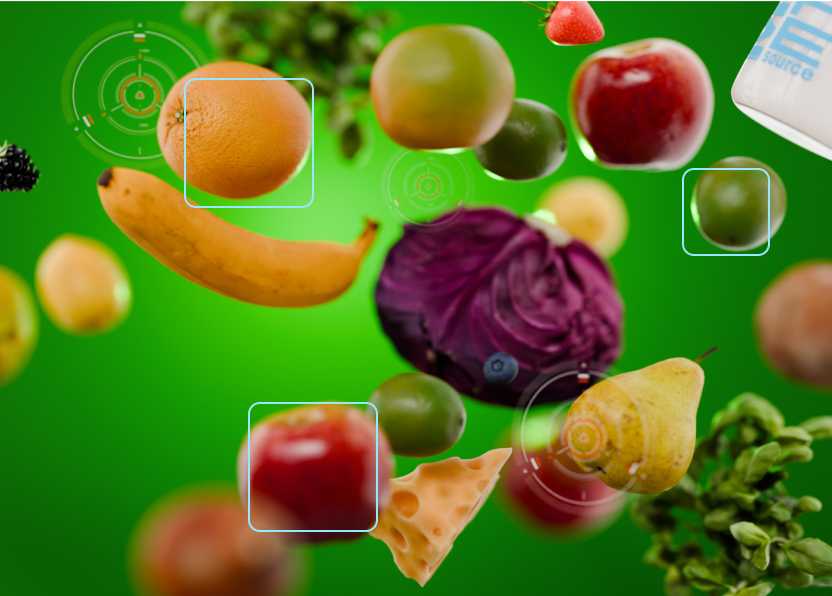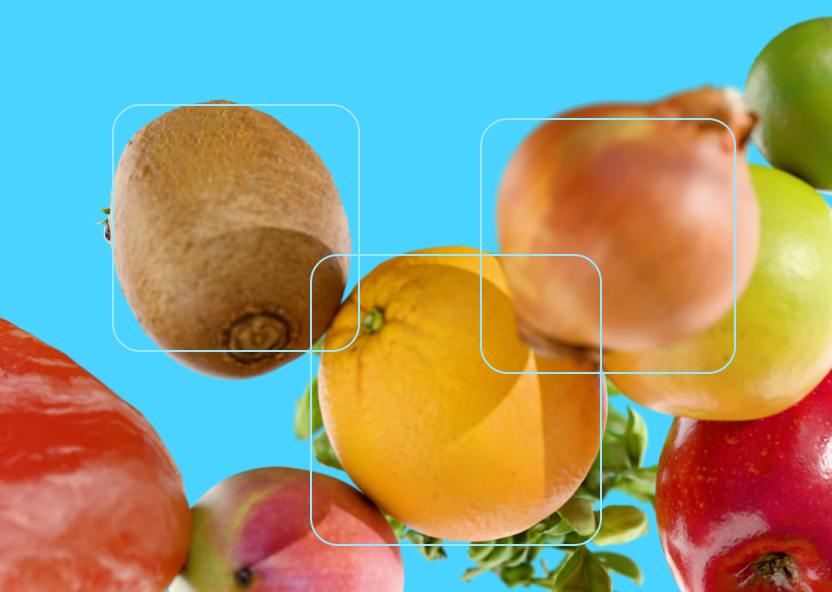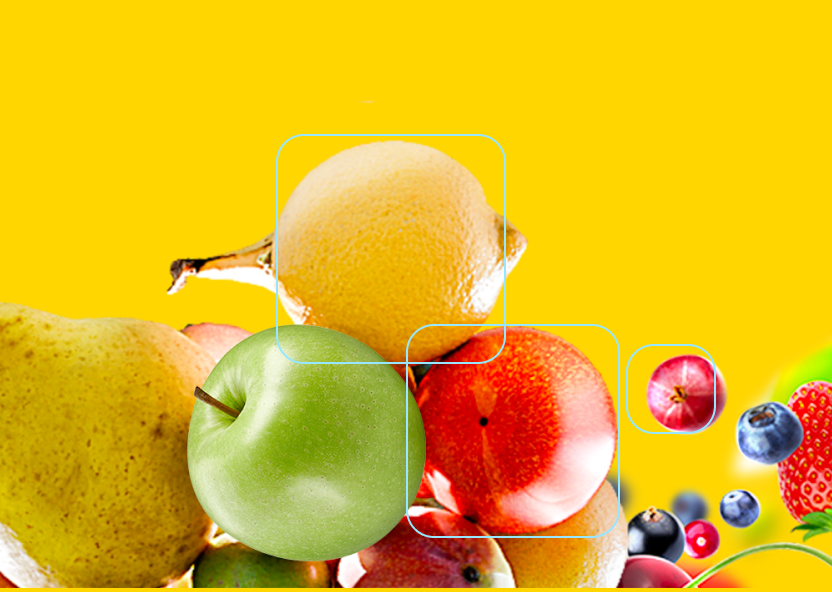Quality Control Process Slowing You Down? Speed Up Produce Inspection
- Quality Control App

How much time does food quality control (QC) really take?
For the overwhelming majority of farms, packhouses and retailers, the answer is simply too much. At every point in the supply chain, operation efficiency is held back by the sheer amount of manual work that it takes to get produce from one point to the next, while balancing multiple sets of quality standards.
The biggest culprit here isn’t actually produce handling time: it’s produce inspection times. Quality managers working with color charts and spreadsheets can only move so fast, and when the pace of an operation depends on human capacity, the results are inspection bottlenecks, delivery delays, and lost sales opportunities.
This article examines the state of play in 2025, and suggests practical solutions for process optimization in an AI-driven environment.
Food Quality Control is Riddled With Bottlenecks
The food industry at large has been relatively slow to embrace digitization. Quality professionals in this industry have to operate in varied and sometimes difficult conditions, where connectivity isn’t a given, and complex logistical challenges make software implementation difficult.
As a result, old methods have survived: manual documentation, performed by individuals working in siloes (and all the subjectivity that follows from that). Until now, these organizations have had to simply accept a wide margin of error as part of doing business.
How Traditional Quality Control Holds Operations Back
Communication Delays: Lack of real-time reporting leads to miscommunication between inspectors, managers, and logistics teams. When these don’t align, there’s a high risk that customers will receive produce that doesn’t meet their quality standards.
Inconsistent Processes: Without a standardized inspection framework, QC results vary between inspectors, affecting product reliability and jeopardizing supplier relationships. Consumers value consistency at the grocery store, so retailers are especially sensitive to shifts in quality from their downstream partners. If they can’t rely on consistent quality, they’ll simply find new suppliers.
Training Issues: Training new inspectors on manual processes is time-consuming and prone to inconsistencies. The expertise of these inspectors is typically locked in routine day-to-day tasks, but their knowledge is more useful when it comes to strategic decision-making.
Data Management Challenges: Traditional methods lack centralized data storage, making it difficult to analyze trends or ensure compliance. This makes preparing for audits more complex than it needs to be.
Inspection Bottlenecks Are Expensive, Too
The most obvious costs associated with conventional inspections are personnel costs. If inspectors have to assess each palette manually, then the number of inspectors has to rise as the company scales, imposing hard limits on growth.
But this isn’t the end of the bad news. There are many other costs that arise directly or indirectly from inspection bottlenecks.
Delayed Shipments
Slow QC processes can hold up entire shipments, leading to dissatisfied customers and supply chain disruptions. Recent research puts the cost of delays at around $3.8 billion in the southern hemisphere, and €4 billion in the European Union. Even without outright delays, manual inspections make it impossible to perform rapid order fulfillment. The ability to quickly reroute produce is vital as a supplier, but it’s only available to businesses that have a shared, always updated language of quality on which to base these quick decisions.
Product Quality Degradation
In addition to escalating costs, prolonged produce handling time can negatively impact freshness. This leads to spoilage and waste, as consumers are unlikely to favor fresh fruits and vegetables that don’t meet their expectations. Because consumers value consistency, any slips in quality can cause a loss of trust in retailers, with disastrous revenue losses following closely afterwards.
The Automation Advantage: Not Just Faster, But Better
AI-powered quality assurance automation like Clarifresh replaces endless paperwork with clear, digital records. Even more than that, it updates itself in real time, so that quality managers always have an accurate, granular picture of quality, whether they’re in the field or the boardroom.
The system automatically logs every inspection with the same criteria, eliminating human error and laying the foundation for continual inspection compliance. Real-time updates mean that managers can quickly see what’s happening and adjust on the fly, making the whole process smoother and more impactful from a business point of view.
With a cloud-based dashboard that shows live updates, it’s simple for anyone to follow the progress of inspections and pinpoint areas that might need extra attention. What used to be a complex, error-prone task quickly becomes a reliable, everyday routine that everyone can trust.
Global fresh produce businesses have been able to effectively double their inspection efficiency through this combination of intelligent staff augmentation, real-time reporting and self-updating QC documentation.
Breaking Down That 100% Efficiency Increase
Doubling inspection efficiency is a realistic goal for fresh produce businesses that adopt AI-powered quality control software into their quality process.
Here are some of the major benefits that drive this impressive ROI:
Time Savings: Before, During & After Every Inspection
Clarifresh streamlines the inspection process by automating routine tasks like paperwork and manual data entry. This automation frees up valuable time, allowing staff to concentrate on the bigger picture instead of getting bogged down with administrative duties.
Reducing Costs, Empowering Teams to Deliver Value
By handling repetitive tasks automatically, Clarifresh reduces the reliance on a large team of inspectors. With fewer personnel required to maintain high inspection standards, businesses can lower their labor costs and reallocate resources more efficiently. It’s not just that fewer inspectors are needed per shipment; it’s that each of these individuals can now focus on driving positive business outcomes in areas that actually require their expertise.
Better Quality Means Happier Customers and Repeat Business
With standardized inspection procedures in place, every check follows a consistent set of criteria. This uniformity enhances accuracy, minimizes errors, and leads to fewer rejected shipments. Over time, this helps to maintain a high level of inspection compliance, and an even higher level of customer satisfaction.
The Real-World Impact of QC Automation: Global Produce Businesses Making the Shift
Companies around the world have discovered that integrating AI-powered QC automation yields remarkable time savings and operational improvements.
Coccinelle Slashes Inspection Times In Half (or more)
Coccinelle, a leading fresh produce wholesaler in Belgium, faced challenges with their manual QC processes, which involved recording defects on paper and later transferring data to digital formats. This approach absorbed too much time. It was also prone to errors, hindering effective quality management.
By adopting Clarifresh’s AI-driven platform, Coccinelle’s inspectors could record assessments directly on mobile devices. This transition led to a remarkable 50–60% reduction in inspection times, allowing for quicker reporting and more proactive quality control measures. The flexibility of the platform also empowered Coccinelle to customize inspection criteria to meet specific client needs, enhancing overall service quality.
Worldwide Fruit’s Efficiency Boost
Prominent UK-based fresh produce supplier WWF contended with outdated and subjective QC processes that varied across regions. This lack of standardization resulted in inconsistencies and inefficiencies, impeding their ability to maintain uniform quality standards.
Clarifresh’s automation and standardization features enabled WWF to double, and in some cases triple, their inspection capacity. Overall, inspection times decreased by 40%, facilitating faster fulfillment and improved inventory turnover without necessitating additional labor costs. The real-time analytics provided by Clarifresh also allowed WWF to make informed decisions swiftly, optimizing inventory management and enhancing customer satisfaction.
These case studies underscore the tangible benefits of integrating AI-powered QC automation in the fresh produce industry. By reducing inspection times and enhancing process efficiency, companies can not only meet but exceed quality standards, leading to improved operational performance and customer trust.
Implementation Process
Step 1: System Setup
Clarifresh’s intuitive software is designed to integrate effortlessly with your current quality control workflows. This means you can start using the system without a major overhaul of your existing processes.
Step 2: Team Training
After setup, your team will go through detailed training modules to ensure everyone is comfortable with the new system. For areas with low connectivity, an offline mode is available that safely captures data and uploads it automatically once the connection is restored, ensuring continuity. This feature is particularly useful for teams working in low connectivity zones.
Step 3: Integration
Clarifresh connects easily with your ERP and supply chain platforms, allowing for a unified system that streamlines operations across departments. This step ensures that all data flows smoothly between systems, enhancing overall efficiency.
Step 4: Timeline Expectations
Most facilities begin to see significant improvements within weeks of implementation. This step-by-step approach is designed to minimize disruption and quickly deliver tangible benefits to your quality control processes.
Quick & Accurate: Quality Control As A Service
In fresh produce, speed and quality are usually two sides of a difficult tradeoff.
With Clarifresh’s quality control software, that’s no longer the case. Instead, these priorities work in harmony, backed by a powerful array of features built for operation efficiency.
Quality Assurance Measures
Clarifresh automates your quality control process, ensuring every inspection follows the same rigorous criteria. This consistency means that every product is evaluated to the highest standard, eliminating variations that could compromise quality.
Accuracy Verification
Leveraging advanced computer vision, Clarifresh detects even the smallest defects that might be missed during manual inspections. This technology enhances precision, ensuring that only products meeting strict quality thresholds move forward.
Error Prevention
Real-time alerts are integrated into the inspection process, instantly flagging potential issues as they occur. This proactive approach allows teams to address problems immediately, maintaining product consistency and preventing costly errors.
Quality Metrics
With live dashboards tracking key performance indicators (KPIs), Clarifresh offers transparent insights into your quality control process. These metrics empower you to monitor performance continuously and make rapid, accurate decisions.
QC Automation: a New Era of Efficiency
In an environment where every second counts, QC automation reshapes quality control by merging speed with precision. It moves beyond the routine tick-box approach, empowering teams with real-time insights and AI-driven accuracy to anticipate challenges before they escalate.
Instead of merely accelerating processes, this innovative approach transforms inspections into strategic opportunities, turning potential bottlenecks into moments for proactive improvement. With QC automation, quality control is redefined as a dynamic, continuously evolving practice that keeps pace with the demands of modern fresh produce operations.
Learn how Clarifresh can help you get inspections done faster and better.



